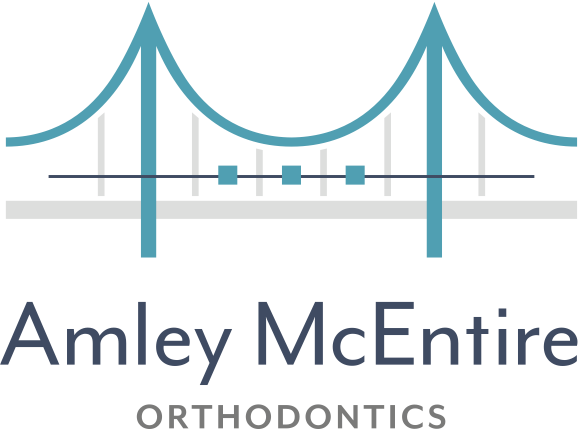About Orthodontics
Almost everyone who has experienced orthodontic care can easily list reasons why they had their teeth straightened. Not only has their biting, chewing, and speaking improved, they also find it is much easier to maintain the health of their teeth and gums. Along with teeth that function properly, the lifelong benefit and pleasant "side effect" of orthodontics is that their smile has become an attractive asset. A beautiful smile contributes to self-esteem, increased confidence, and can enhance social and career success. As the orthodontist brings teeth, lips, and face into proportion, he or she shapes not only the smile but also a person's general attitude toward life. People with beautiful smiles have a lot to be happy about!
Twelve early warning signs indicating it is time for an orthodontic exam:
Early or late loss of baby teeth
Difficulty in chewing or biting
Mouth breathing
Finger sucking or other oral habits
Crowding, misplaced, or blocked-out teeth
Jaws that shift, make sounds, protrude or retrude
Speech difficulty
Biting the cheek or biting into the roof of the mouth
Protruding teeth
Teeth that meet in an abnormal way or don't meet at all
Facial imbalance or asymmetry
Grinding or clenching of teeth
When to Get Orthodontic Care
Amley McEntire recommends the age of 7 as the best time to begin seeing an orthodontist. Your first visit with us is not synonymous with beginning orthodontic treatment. Our goal is to determine if any treatment will be needed and to time it appropriately.
The Optimum Time For Orthodontic Treatment
Since we believe early treatment should be interceptive in nature and limited to several objectives, we typically like to begin comprehensive orthodontic treatment for all of our patients around the time most of the permanent teeth have erupted. We can determine this "best" time for each patient when we have been able to monitor growth and development for several years.
Our approach has eliminated the need in most cases for extracting permanent teeth, for using palate expanders or headgears, and for doing two full phases of orthodontics. Research done at leading orthodontic programs at the University of Florida, North Carolina, and Pennsylvania confirm our approach to confining orthodontic treatment to a single orthodontic treatment episode to accomplish the desired dento-facial changes for a dynamic lifetime smile.
When Is It Too Late To Begin Orthodontic Treatment?
Almost any adult at any age can benefit from orthodontic care. Today adults especially appreciate the benefits of a beautiful smile, enhanced self-confidence, and improved dental health. Our practice is comprised of nearly 25% of patients over the age of 21. Some of our adults have been in their late 80's and early 90's. Although adult facial and dental bones are no longer growing, teeth can still be moved through healthy adult bone.
Adult orthodontic treatment can take a little longer and may have some limitations in the amount of correction achieved. Both the Damon Clear and Invisalign orthodontic systems are esthetically pleasing adult treatment methods.
How Long Does Treatment Take
Routinely, most orthodontic treatment takes 18 to 21 months to achieve optimal results. Many adults who have experienced a relapse of previous orthodontic treatment when retention was not on a lifetime basis can have corrections completed in 9-12 months. Every treatment time is an estimate by the orthodontist which greatly depends on patient cooperation.
Patients who keep their appointment schedule, avoid eating foods that damage appliances, practice good oral hygiene, and comply with instructions to wear elastics or aligners, often see their treatment time reduced by 3 to 6 months.



